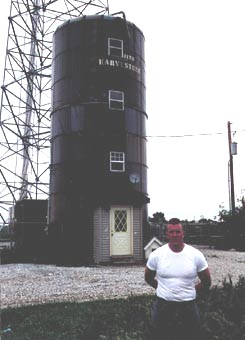
"It's like living in a tall tin can," says Jerry Hinrichsen whose house is a 42-year-old Harvestore silo located on a farm his father, Chuck, bought eight or 10 years ago.
The 19-year-old Goodfield, Ill., college student lives in the recently converted silo with his older brother Eric, 20. The Hinrichsens did all the work themselves, including electrical and plumbing work, and installed the electric furnace and water heater. The furnace and water heater are hidden beneath a circular stairway that goes to the top of the silo.
"I just got a wild hair one day," says Chuck. "It was structurally very sound and I figured this would give Jerry and Eric a place of their own. They're only about 100 yds. from Mom and Dad."
The silo is 40-ft. tall and 17-ft. in dia., with a 4-ft. thick concrete foundation. The hardest part of the conversion, which took five months beginning a year ago in February, proved to be finding a way around the foundation.
"We had to build an entry point to protect the plumbing, instead of trying to go through 4 ft. of solid concrete," Chuck says.
Another challenge was getting the 2 1/2-in. thick foam insulation to stick to the glass-lined "walls". A special water-based epoxy primer was applied about 1 ml. thick with an airless paint sprayer by a local insulating contractor.
The insulated walls were then sprayed with a white acrylic latex to seal them. Holes were next cut in the walls for the double-paned, thermal efficient windows, one on each side of the top three floors. Braces were welded to the walls to support the stair steps as were brackets for the floor joists, which were covered with plywood.
The four-story silo house has about 200 sq. ft. of living space per floor. The first floor is the bathroom and kitchen, complete with cabinets, countertops, sink and appliances. The second floor is the living room furnished with a couple of sectional couches, TV and stereo. The third and fourth floors are the brothers' bedrooms.
More than half of the out-of-pocket expense was for foam insulation.
